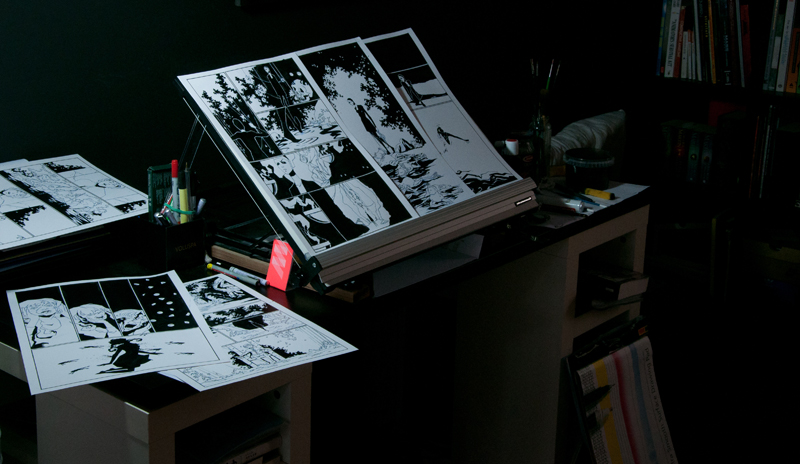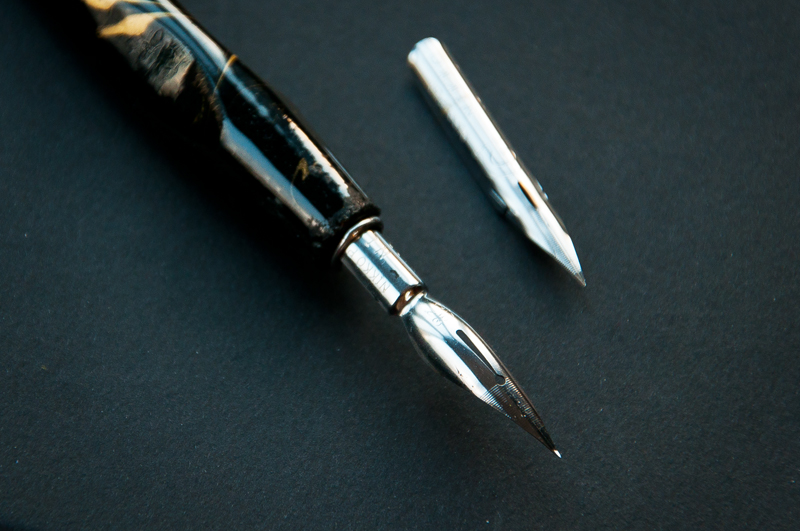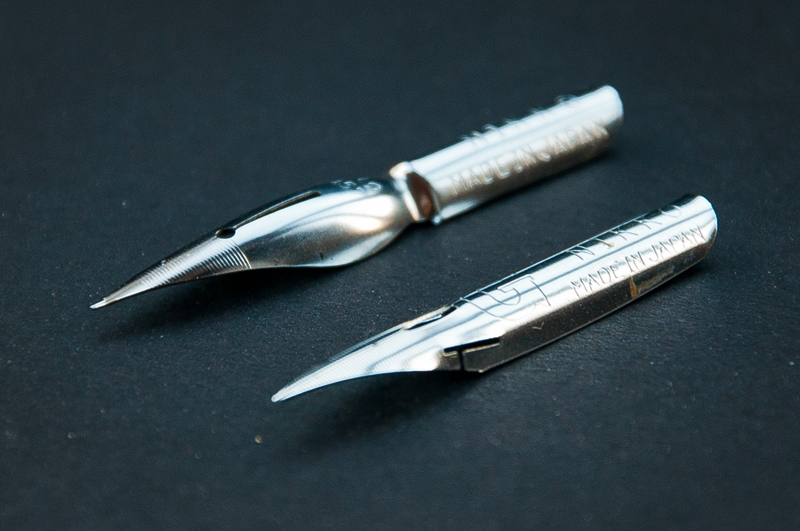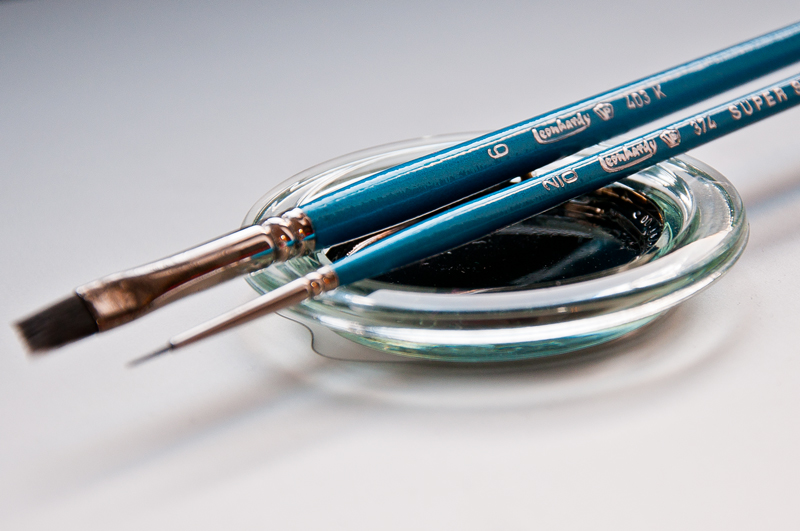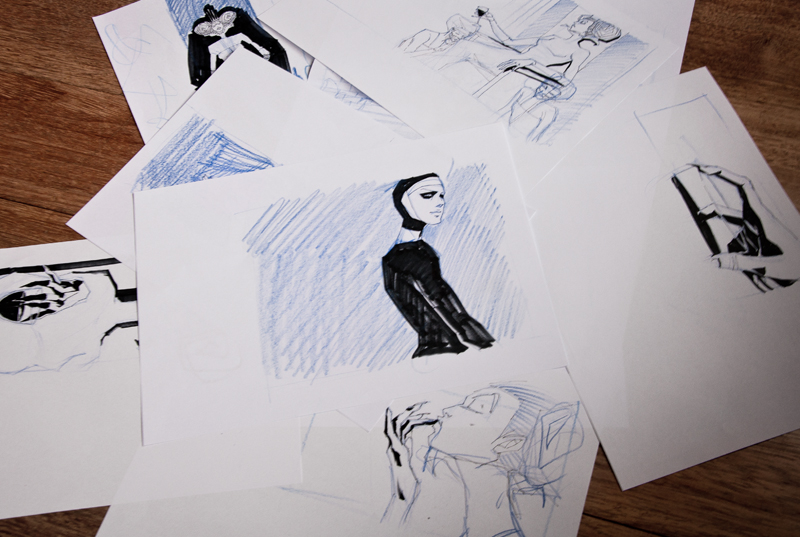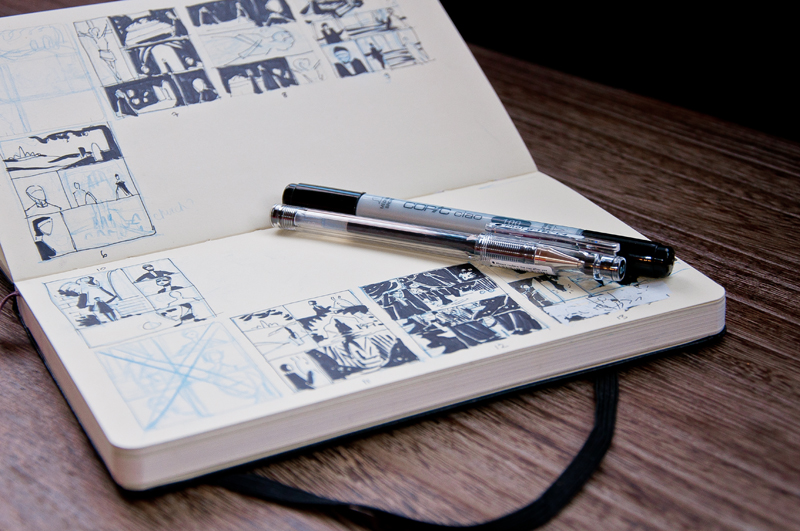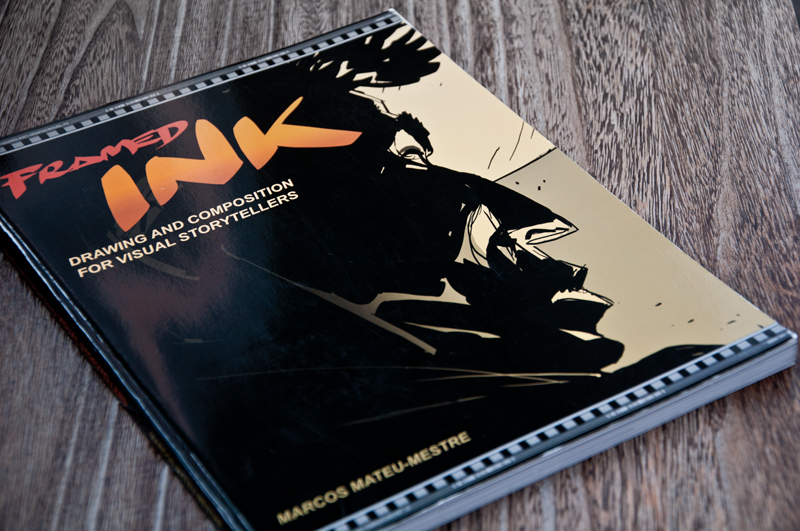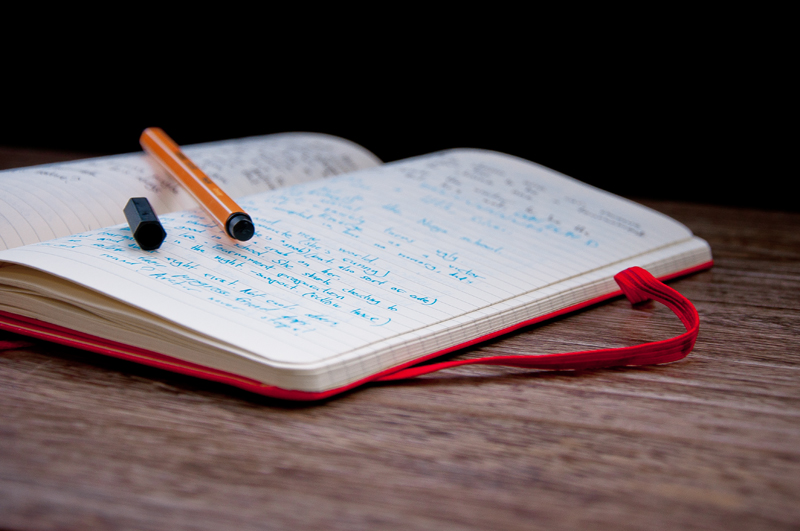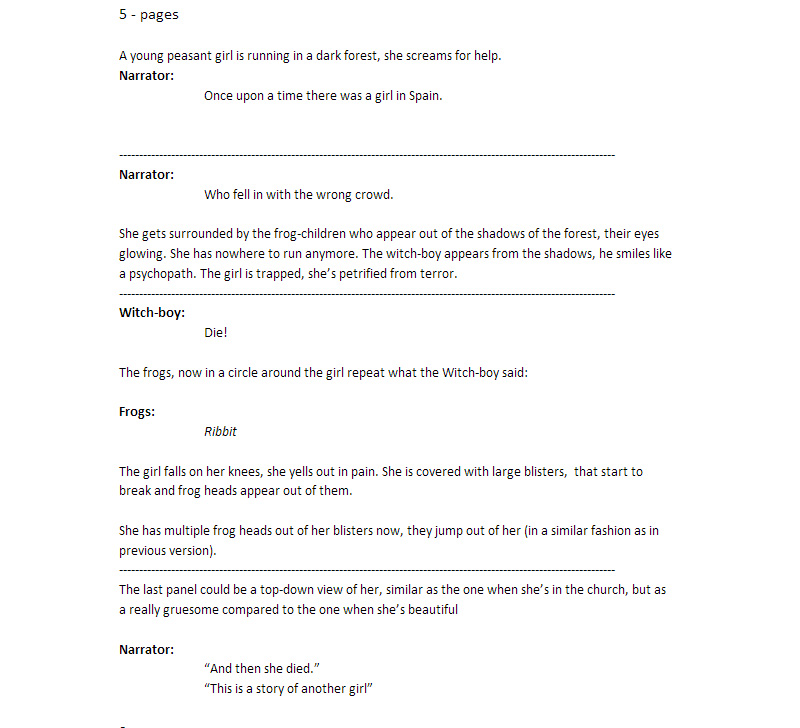This is a follow up article for “How to make a web comic”-series Part 3: Drawing Run Freak Run
Inking is definitely the most relaxing part of the process. Most of my big decisions are already made in the thumbnailing and drawing stages and I can just focus on the final art.
First I ink all the lines with a nib pen and after that I fill in the black areas with different sized brushes. The nibs I use are either “G-pen” nibs or “saji-pen” nibs. They produce lines of very similar thicknesses. However, you’ll notice that there are significant differences in the way make lines. G-pens are a little more flexible than saji-pens, and therefore offer a bigger range in line variation. Saji-pens can achieve thick and thin lines too, but because the nib is a little firmer the effect will be a bit softer. Also, saji-pen’s tip has a soft curve, which I think adds to the softer, more flowy line.
Saji- and g-pen nibs are just two out of many types you can use. As you get used to working with nib pens, you’ll start noticing which nibs fit you best and give you the line quality you want. It’s very individual, and even though the differences between different nibs are subtle, they will feel huge once you start working with them properly. So don’t settle on the first nib you get your hands on!
When you get your nibs out of the package for the first time, either burn the tip for a couple of seconds with a lighter or run them under hot water and then wipe them with a paper towel. The nibs are coated in oil which prevents them from rusting while they’re in the package, but it will also prevent the ink from flowing consistently when you start using it.
As to paper preference, the A3 Bristol paper (extra smooth surface) has become my number one favourite. The smooth surface is perfect for nib pen work. In my experience the sharp nibs tend to pull on fibres of softer, more textured papers and get clogged constantly. Another “limitation” of a textured paper is that the softer the paper, the more the ink will bleed around the lines you’re making. All of this can be a great advantage if you use brushes instead of nibs. Here too, I recommend experimenting with different combinations until you find one that you can fall in love with.
In my final steps I scan the page and open it in photoshop. The final clean up consists of getting rid of the blue pencil lines by selecting the page, going to “channels”, selecting the blue channel (which will get rid of the blue lines), copying the page, switching back to RGB and pasting the copied page in layers. Then I go to “levels” and make the black areas fully black and whites fully white.
This is where my job ends. In the next step Silver takes the pages and brings them to life with lettering. But telling about it is his domain :)
Cheers,
-Kaija

